Contents
section 1b: science.
Introduction
'Philosophy
is the science
which considers truth.'
Aristotle
Illusion,
the cyclic and the implementation
Once one is
settled with the
method, once one,
following the right course, figured
out the truth of the matter the way
Descartes points it out in his
method, one logically arrives at
what must follow: the acceptance of
the outcome of the methodical
approach. What specifically matters
then is the unity, the undivided or
singular nature of the complete of
reality. When the outside is at the
inside and the inside at the
outside, are we free from illusion
and of a continuous reality. John
Lennon sang on the White Album
of the Beatles: 'Your inside is out,
when your outside is in' to express
the paradox of the oneness free from
illusion of a multidimensional
world. De German mathematician and
astronomer- theoretician A. F.
MŲbius
(1790-1868) 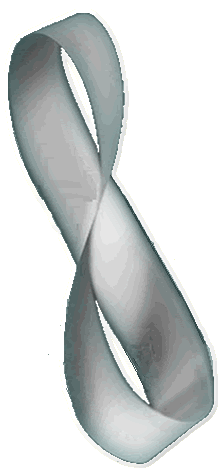 discovered
at the beginning of the nineteenth
century, at the same time as another
mathematician, J.B.
Listing (1808 -
1882) did, that something with two
sides can have one surface: de
mŲbius ring. The inside is the
outside when one glues a strip of
paper with a twist into a ring -
think of cyclic time, that is, by
gluing the frontside to the
backside. This ring stands for the
singular of science being free from
illusion. As a consequence, in the
following section of this site it is
of interest to end this difference
between the image that the seeker has in mind,
that the witness, the desiring and
covetous person has in mind, on the
one hand, and that what was sought,
the order, the object of perception,
the ultimate result, the nature, the
object of study, including the
so-called 'absolute', 'irrefutable'
or 'inevitable' of reality, on the
other hand. This is the foundation
of scientific thought: the endeavor
to be free from illusion. To know
what one measures is in science
called 1) validity, starting
with zero, measuring
from reference point, and 2)
reliability, or the gauging of the
instrument of measurement, is,
answering to the duty of reference,
what the practice is for the sake of
a measurement free from illusion.
Reliability thus concerns the
uniformity of, or the accordance
with both the standard unit of
measurement and the scale of
measurement belonging to it.
discovered
at the beginning of the nineteenth
century, at the same time as another
mathematician, J.B.
Listing (1808 -
1882) did, that something with two
sides can have one surface: de
mŲbius ring. The inside is the
outside when one glues a strip of
paper with a twist into a ring -
think of cyclic time, that is, by
gluing the frontside to the
backside. This ring stands for the
singular of science being free from
illusion. As a consequence, in the
following section of this site it is
of interest to end this difference
between the image that the seeker has in mind,
that the witness, the desiring and
covetous person has in mind, on the
one hand, and that what was sought,
the order, the object of perception,
the ultimate result, the nature, the
object of study, including the
so-called 'absolute', 'irrefutable'
or 'inevitable' of reality, on the
other hand. This is the foundation
of scientific thought: the endeavor
to be free from illusion. To know
what one measures is in science
called 1) validity, starting
with zero, measuring
from reference point, and 2)
reliability, or the gauging of the
instrument of measurement, is,
answering to the duty of reference,
what the practice is for the sake of
a measurement free from illusion.
Reliability thus concerns the
uniformity of, or the accordance
with both the standard unit of
measurement and the scale of
measurement belonging to it.
In Vedic culture,
the culture of ancient India, one
speaks of moksha, or
liberation from the bewildering
effect of material nature which is
called m‚y‚, illusion. Free
from illusion, or free from m‚y‚,
we, being connected in the ether,
then speak of enlightenment,
liberation and science: at that
moment we are relieved
from the desire and the confusion of
ignorance, or freed from the
dividedness, the estrangement, the
separation, and the loneliness which
turned us into a seeker. The
philosopher Immanuel
Kant
(1724-1804) defined enlightenment,
in his famous essay What
is Enlightenment? from 1784,
as the ability to reason according
to one's own authority, to have the
courage to make use of one's own
reason without any self-incurred
tutelage (*). Vedically
that is called caittya: to
have accepted the inner guru in the
last stage of the bh‚gavata-dharma
emancipation to god-consciousness:
it is called ‚tma-nivedanam,
the ultimate surrendering, the
self-communication, the listening to
the inner voice, to the internalized
teacher, to have accepted the
confrontation with oneself. The
purpose of deriving from one's own
power of reasoning, in Sanskrit
called ahaituka, is a word
also connected with selfless
'unmotivated' action (see also S.B. 1.2:
7). Illusion, like seeing a
snake where a piece of rope is, is
that what stands between the
observer and the observed and what
causes problems of the kind we in
the West describe as existing
'between the ears' or as psychic
trouble. 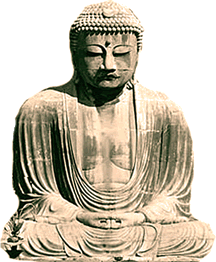
Like we discussed
in the previous section, this
consequence of being illusioned by a
not-of-front-with-back connected
one-sidedness and linearity, is also
true for the linear logic of books
as opposed to the more intuitive
logic of dynamic, interactive and
multithreaded websites, websites -
like this one - suited for more than
one thread of logic or causal
reasoning. And so we see also the
internet as being an indispensable
tool for fighting illusion and
defending enlightenment, for in a
state of illusion we are unable to
find enlightenment and we are
seeking. The Buddha (623-543
B. C.) e.g., filognostically seen as
one of the most prominent founders
of modern scientific thought, tried
to clarify this by letting people
meditate with the idea that it is
not so much about the thinking,
comprised of ideas and mental
images, but rather about the pure
consciousness of perception,
including the acceptance of the
spiritual order about it. Once we,
like a monk or thereafter like a
scientist (or the other way around
of course), studiously have found
and accepted the order of the
brothers or truth-loving souls,
factually the thinking mind itself
has become the hindrance, has become
a kind of a, from desire born,
resistance against one's clear
perceiving, or a cloud of thoughts
obscuring one's vision. Thus one may
find, often technically oriented,
branches of science in which one is
completely averse to all unnecessary
abstraction and relativizing. The
Encyclopedia
Britannica 2004
defines science as the knowledge of
natural regularities that is
subjected to some degree of
skeptical rigor and is explained by
rational causes. Away thus with that
cloud, is the mission, see matters
as they are. Perceiving what is and
accepting the perceived, thus comes
to rank first. For that reason
this section begins with the
contemplation of the ultimate order
of things: the natural order of
time. Like we right away stated in
the preface, each form of order in
the universe in fact is cyclic, for
the strictly linear on itself,
certainly seen from an organic
perspective, is only destructive,
like the shrapnel is, and all the
rest, that in a linear fashion
spreads after the exploding of a
bomb. The primary order of the
cyclic of nature, we in principle
know filognostically as a
threefoldness that Vedically is
called trik‚lika. Time, as
divided in three, we thus
predominantly know as the past, the
present and the future, that
Vedically, in the form of repetitive
ages or mah‚yugas, lead to
each other, but time is also, as in
the preface e.g., described in other
tripartites, like the three
repetitive four-month seasons of the
year (winter, summer and
spring/autumn); the creative,
destructive and sustaining of time;
the natural, cultural and
psychological of time; the cyclic,
the linear, and the unity of the
time, and, more empirical and
specifically cyclic, the order of
the sun, the moon and the stars.
Content
In this
science department we then begin
with this last idea of dividing
matters in three. One could consider
the stars, the moon and the sun as
respectively the plate and the hands
of the clock of the consciousness of
the natural order of time, or the
consciousness of natural science. 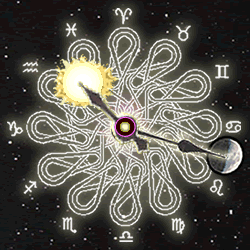 With the
zodiac of the twelve astronomical
stellar signs we thus see how the
sun and the moon, as independent or
discrete forms of time-order, from
the force field of the galactic
ether, relating to each other
determine the entirety of cyclic
life on earth, or better said,
constitute the local measure for it.
In science we should be careful with
causal reasoning. In India one says
that the god Candra of the moon and
the god SŻrya of the sun are
subjected to V‚sudeva, the god of
the celestial sky and
personification of the ether [S.B. 5.23: 4]. He is
the measure of things, the gods are
His subjects. It is, less
allegorical, mathematically spoken
the number of twelve to the power of
three what constitutes the
scientific paradigm of time: the
twelve signs of the astronomical
zodiac described with twelve lunar
months and twelve culturally derived
solar months. Voilŗ; the clock of
the order of time of the science of
nature of our planet earth. That is
how, as far as the cyclic order of
time is concerned, the nature of
time operates on this planet and not
in any other way. They who see it
differently, like modern man with
the time manipunlations of standard
time, are not really of this planet,
are scientifically spoken not really
'with their feet on the ground'. The
first three pages of this department
of the site offer the scientific
basis of an unequivocal
acknowledgment of the factual
reality of the ether and the
therewith associated cyclic order of
time that conditioned, since
primeval times, us living beings, so
confirm the chronobiologists. And
with that order of time we are
sustained and build up our
correlating 'values-and-standards'
principled engagement, while
filognostically being directed at
the person. When the foundation is
firm, the house stand firm. Is the
impersonal clear, so too the person,
and also the person of God, can feel
safe and be respected therein and
therewith. Once we reason from that
interest of the God called Allah,
Jaweh and Krishna, there will be no
fundamentalist able to say that the
Christians and other religions of
natural philosophy would be godless.
With the
zodiac of the twelve astronomical
stellar signs we thus see how the
sun and the moon, as independent or
discrete forms of time-order, from
the force field of the galactic
ether, relating to each other
determine the entirety of cyclic
life on earth, or better said,
constitute the local measure for it.
In science we should be careful with
causal reasoning. In India one says
that the god Candra of the moon and
the god SŻrya of the sun are
subjected to V‚sudeva, the god of
the celestial sky and
personification of the ether [S.B. 5.23: 4]. He is
the measure of things, the gods are
His subjects. It is, less
allegorical, mathematically spoken
the number of twelve to the power of
three what constitutes the
scientific paradigm of time: the
twelve signs of the astronomical
zodiac described with twelve lunar
months and twelve culturally derived
solar months. Voilŗ; the clock of
the order of time of the science of
nature of our planet earth. That is
how, as far as the cyclic order of
time is concerned, the nature of
time operates on this planet and not
in any other way. They who see it
differently, like modern man with
the time manipunlations of standard
time, are not really of this planet,
are scientifically spoken not really
'with their feet on the ground'. The
first three pages of this department
of the site offer the scientific
basis of an unequivocal
acknowledgment of the factual
reality of the ether and the
therewith associated cyclic order of
time that conditioned, since
primeval times, us living beings, so
confirm the chronobiologists. And
with that order of time we are
sustained and build up our
correlating 'values-and-standards'
principled engagement, while
filognostically being directed at
the person. When the foundation is
firm, the house stand firm. Is the
impersonal clear, so too the person,
and also the person of God, can feel
safe and be respected therein and
therewith. Once we reason from that
interest of the God called Allah,
Jaweh and Krishna, there will be no
fundamentalist able to say that the
Christians and other religions of
natural philosophy would be godless.
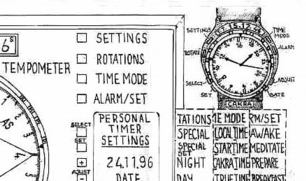 Following
this exposition on the order of the
moon, the sun and the celestial sky
a
clock-design is
discussed representing
the insights of the first three
pages. Ultimately it is not about
the construction of a theory or a
collection of facts on itself, but
about a method of measuring time, a
model of order or a paradigm we can
be practical with - even though it
is a filognostically inescapable
cross we then have to carry -
gnostically spoken the cross in the
circle, or the burden of a necessary
confession to the cyclic order. We,
so to say, need to lay our hands on
concrete matter in order to be able
to say that our science is of any
use, is willing to sacrifice or
capable of the responsibility, even
though that concrete interest is but
a certain choice of relative
importance to other possible
choices.
Following
this exposition on the order of the
moon, the sun and the celestial sky
a
clock-design is
discussed representing
the insights of the first three
pages. Ultimately it is not about
the construction of a theory or a
collection of facts on itself, but
about a method of measuring time, a
model of order or a paradigm we can
be practical with - even though it
is a filognostically inescapable
cross we then have to carry -
gnostically spoken the cross in the
circle, or the burden of a necessary
confession to the cyclic order. We,
so to say, need to lay our hands on
concrete matter in order to be able
to say that our science is of any
use, is willing to sacrifice or
capable of the responsibility, even
though that concrete interest is but
a certain choice of relative
importance to other possible
choices.
Before we
next embark on a further discussion
of the implications of the paradigm
that was found, we offer a short
overview of what
other scientists thus far had to
say on this. It is of
course impossible to attend to all
related sciences or even be
conversant with them, and much will,
partly because they were not in
pains to make themselves known over
the internet, thus stay unmentioned.
It was not meant to be that this
site would be directly comprehensive
in discussing the scientific field
at this point. There are already
many philosophical, historical,
sociological, cognitivistic,
behavioristic, literary, physics and
chronobiological studies and also
feature films published on this
subject. Firstly are we
scientifically more concerned with
an equal paradigmatical treatment of
the order and coherence of the three
fundamental and absolute elements of
science: 1) space or the forms of
ether, 2) the time or the order of
time associated with it and 3)
matter in its organic and inorganic
appearances constituting the
phenomenon of life in space-time. On
top of that the new norm for the
digital age says: 'what we cannot google,
does not exist', or else it
apparently was
not worth
the effort of sharing and being
connected digitally. The knowledge
one shares is the life one dares. If
not, if we are not connected in that
ether, we may have reached not that
far yet, and that breeding stove
then may be. Here we therefore
concentrate, without going beyond
necessity too much, on what directly
as such was vital in the community
in this respect, and what would be
of relevance to our basic thesis,
what our own contribution concerning
this subject is and what further
would be needed to arrive at a
proper, general integration and
practical approach. The filognostic
paradigm in that sense is, finding
it's existence halfway the nineties
of the twentieth century, but in
it's initial phase of its
development, and will undoubtedly
comprise much, much more than it
already does. Expansion and progress
are signs of a good health and
therefore is it to our opinion
justified to state that we are
engaged in the design of a complete,
multicultural world order which
possibly takes thousands of years to
answer in full the here together
realized paradigmatic order in al
respects. Possibly also much of the,
with the fourth dimension of time,
four-dimensionally related sciences
we have at the moment, originated but
from the hankering for such a
galactocentric and better
sustainable and ethereal more
responsible order. And may this
writing and acting therefore thus be
a first step in the ordering and
further societal profiling of those
branches of science. Once we are
convinced of the proper method, the
correct ordering of the known facts,
the desired depth of analysis, the
supporting transcendence of rising
above in abstraction, the wanted
piety of the person and the
completeness of the politics we
need, are we able to do that most
purposefully. Methodically seen we
in fact only at the very end,
keeping order with that complexity,
must further fit into our model what
we possibly can. As for now thus we
only try to make a first move in
this fresh and new, but at the other
hand also very classical concept of
time, space and matter, by which
possibly the entire world is served
in the end.

To begin
with there are two contributions
belonging to the initial phase of
the science of our paradigm. There
is an epistemological treatise
called The
Not-paradigm that maybe
ranks amongst the most difficult
pages of this site. It was written
before the writer himself was really
in order with the time of our
ethereal nature, but, because of
that in deep thought about it, with
a well-filled bookcase had made a
begin with the filognostic
integration in the form of
meditations on the righteousness of
action and the uniting of the
spirit. The view, that puts in a
more positive perspective the
negation that with the philosopher F. Nietzsche
(1844-1900) was called the 'verneinung'
of the hypocritical, selfish
system-builders ego supposing other
worlds in denial of the real one,
dates from 1987 and fconstitutes an
example of how one, having freshly
(as I did then) arrived from
science, very rationally may look at
the idea of saying no and deriving
meaning therefrom. 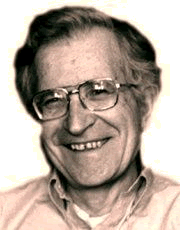 So it is a
typically scientific, rationalistic
discourse which, because of a lack
of certainty about a fundamental
order having become very complex,
may be considered to belong to the
theory of science; that theory in
which scientific knowledge is
engaged in the investigation of the
area between that what would be an
individual opinion and that what
belongs to a vested conviction. It
illustrates nicely how the
psychology of the science works that
is getting more and more complex in
it's search for an ultimate order.
In a fundamental way it explores the
theory of science on how knowledge
develops in what N.
Chomsky (1928), a
modern psychologist/linguist, calls
'generative grammar'. It
belongs more or less to the
scientific duties to be engaged with
philosophical correctitude,
especially concerning knowledge and
its boundaries. As something
existing for itself I later on
revoked it, as being too much at
odds with the essence of the matter
of filognosy, but I nevertheless
included it here because even in
this early stage it manages to hit
upon the essence of the problem of
time.
So it is a
typically scientific, rationalistic
discourse which, because of a lack
of certainty about a fundamental
order having become very complex,
may be considered to belong to the
theory of science; that theory in
which scientific knowledge is
engaged in the investigation of the
area between that what would be an
individual opinion and that what
belongs to a vested conviction. It
illustrates nicely how the
psychology of the science works that
is getting more and more complex in
it's search for an ultimate order.
In a fundamental way it explores the
theory of science on how knowledge
develops in what N.
Chomsky (1928), a
modern psychologist/linguist, calls
'generative grammar'. It
belongs more or less to the
scientific duties to be engaged with
philosophical correctitude,
especially concerning knowledge and
its boundaries. As something
existing for itself I later on
revoked it, as being too much at
odds with the essence of the matter
of filognosy, but I nevertheless
included it here because even in
this early stage it manages to hit
upon the essence of the problem of
time.
Directly
after this page another piece of
history follows.
It is called Mental
health and the Time-system,
Father time; the Analytical
Conclusion, and
consists of a report the writer
delivered to Prof. Vroon
(1939-1998), a renown 20th century
Dutch professor in experimental
psychology, who was active in the
field of popularizing scientific
psychological research. The piece
clarifies, in a language easy to
understand, what the psychological
problem of the order of time is all
about.
The page
thereafter deals with the acute
societal problem of drugs,
addiction and control in
relation to a movie named 'The
Insider'. The problem of illusion,
the confidentiality and the neurotic
conflict of being addicted is
emerging here as a symptom of the
disease of a society that, by it's
principle of controlling and
enjoying, acts against nature.
A page
thereafter does about the same, but
then departing from the idea of 'alien
frequencies' in
relation to a SF-movie called 'The
Astronaut's Wife'. In this article
also the disease of aids is
discussed, as also
a general theory of disease is
offered in which the symptoms of the
four fundamental syndromes of
materialism are being ordered and a
possible way out is indicated.
With respect
for the knowledge thus far build up,
a basic concept of philosophy
follows called
'A Small
Philosophy of Association' which,
for a paradigmatic lead, positions
all this science of time in a
meaningful societal perspective.
This page of the science department
constitutes a ideational nucleus
concerning the question what exactly
'societal association' would be and
how the different associations
themselves can be associated with
respect for the dictum of 'unity in
diversity'.
On yet
another page is discussed what might
be the most important aspect of the
order of time: the
fields of time-bound action in
relation to political consciousness.
It makes perfectly clear what the
road is we have to travel to arrive
from an unstable, badly balanced
democracy which, from nepotistically
functioning organizations and
power-minded false ego, is led
at a representative democracy of
identity-conscious people no longer
being afraid of their own
self-willed election results.
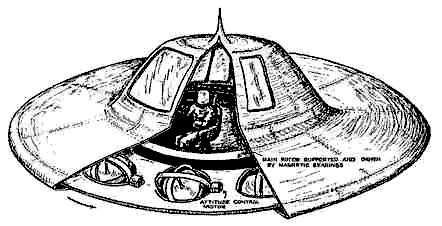
On a last
page is discussed the scientific
bewilderment about time-related
inexplicable phenomena: flying
saucers and crop circles. The
problem is constructively
approached, without escapist
cynicism, and an effort is made to
arrive at a legitimate and
scientifically viable answer.

